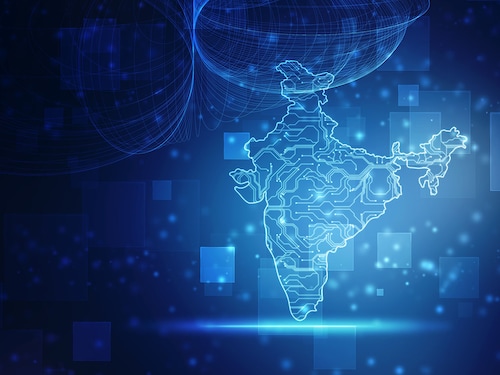Troika of digital, physical and electric infrastructure and India's e-commerce g
India's 'Digital India' initiative drives e-commerce expansion, transforming business through widespread internet access and connectivity


Thanks to the "Digital India" initiative, smartphones and the internet have increased dramatically in India in recent years. There were 940 million internet connections in India as of August. Moreover, 95 percent of all internet connections are wireless, indicating the widespread accessibility and potential for e-commerce growth in the country. This initiative has increased internet use and enabled e-commerce, transforming business across sectors, opening newer markets and segments, and changing how business is done.
As per the Invest India report, the Indian e-commerce industry, with a CAGR of 23 percent industry, is expected to cross the $350 billion mark by 2030. While internet access is a prerequisite for e-commerce, the rise in e-commerce has often been ascribed to rising levels of wealth, reasonably priced data plans and, notably, the emergence of Digital Public Infrastructure (DPI), which includes digital payment systems. However, commerce is exchanging goods or services for cash or equivalent value. It necessitates information exchange not just of goods and services but also of payments.
While smartphone phones, with their 75 percent penetration, provide accessibility, and UPI provides the required digital payments transactional edifice for e-commerce, this article unpacks some of the other government policies and programs that have robust positive externalities on e-commerce.
First, logically, the exchange of goods requires the transportation of goods, which is facilitated by physical infrastructure. The physical backbone is supported by PM GatiShakti"s infrastructure push, a transformative approach to multi-modal connectivity covering railways, roads, ports, airports, mass transport and logistics infrastructure. Over the last five years, the addition of 24,412 kilometres of highways (a 20.25 percent increase) has created newer, faster logistics corridors. In addition, incremental rural connectivity under PM Gram Sadak Yojana in five years is 161,811 km. This expanded network, intra-city and in the hinterlands, provides the required infrastructure, facilitating "commerce enablement".
Second, along with physical infrastructure, e-commerce must have last mobility and connectivity, wherein the electric vehicle (EV) policy thrust plays a significant role. The adoption of electric vehicles in the delivery fleet has been instrumental in reducing per-unit delivery costs. The cost per km for EV bikes is 0.1-0.15 per km compared to petrol bikes, which is approximately Rs2 per km. Effectively, over 5,000 km, electric vehicles save about Rs95,000, reducing per-unit delivery costs. This reduction in delivery costs helps improve the per-unit economics of e-commerce goods. EV isn"t just about environmental consciousness it"s also about commerce efficiency.
Lastly, initiatives to facilitate discoverability via Open Network for Digital Commerce (ONDC). Merchants and e-commerce companies have a challenge in discovering delivery partners. Logistics providers for e-commerce companies struggle as they cannot aggregate or batch delivery services. They are either captive providers or third-party logistics providers (3PLs) whose arrangement with their clients curtails them from aggregating deliveries. This is where another DPI, ONDC, creates value by offering interoperability. Adapters can raise visibility, utilisation, and efficiency throughout the logistics value chain.
Delivery workers can work across sectors and increase their earning potential with the assistance of ONDC in identifying logistical needs. For example, delivery workers may help with last-mile and e-commerce deliveries during a brief lull in food orders. This adaptability might guarantee on-time delivery for clients while simultaneously increasing operational effectiveness and lowering expenses for delivery staff. Additionally, ONDC can make it possible to group delivery orders across several suppliers, which would reduce costs. However, nascent logistics on ONDC have seen steady growth, with three lakh transactions per day/ month.
A distinctive paradigm of sustainable e-commerce growth is being created by the government"s push for physical connectivity, digital public infrastructure, private sector innovation in EV technology, and transformative business models. DPI has enhanced discoverability and reduced transaction friction, highway connectivity has enabled faster deliveries, and EVs enable last-mile delivery to be more sustainable and cost-effective. The convergence of these three forces—digital, physical, and electrical—isn"t just enabling e-commerce, it"s reimagining it for a sustainable future. India"s e-commerce is also headed toward an electric future, not just a digital one.
Ashish Desai is an Associate Professor of Information Management and Analytics at SPJIMR, and Pratham Sharma is a PGPM 2023-2025 student at SPJIMR. Views expressed are personal.
First Published: Dec 03, 2024, 14:27
Subscribe Now